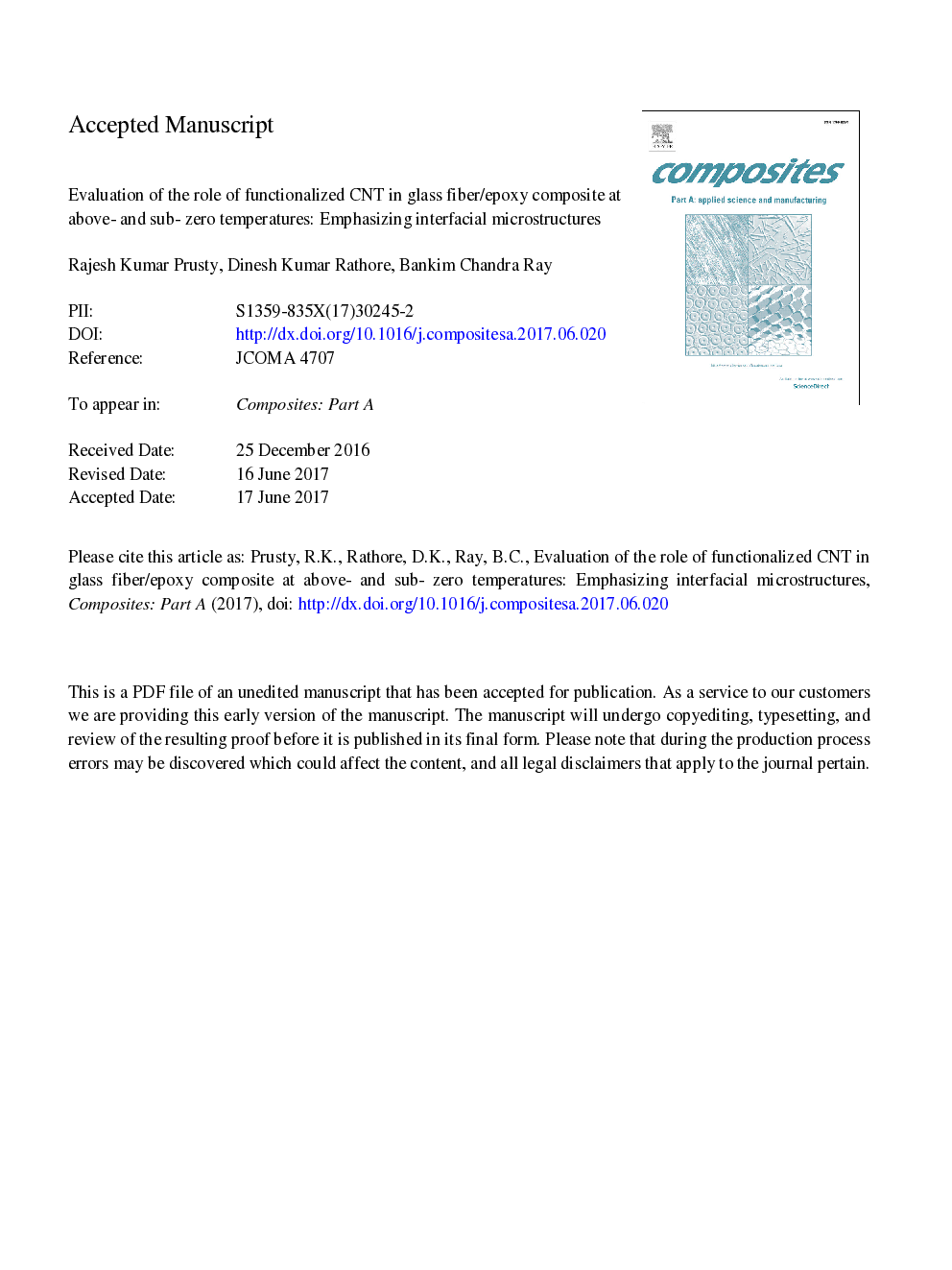| Article ID | Journal | Published Year | Pages | File Type |
|---|---|---|---|---|
| 5439402 | Composites Part A: Applied Science and Manufacturing | 2017 | 27 Pages |
Abstract
Present work is aimed to elucidate the temperature dependant reinforcement efficiency due to the chemical restructuring of the nano-filler/matrix interphase in carbon nanotube embedded glass fiber/epoxy composite. Oxidized CNT/glass/epoxy composite exhibits 25% and 10% better strength than control glass/epoxy (GE) and pristine CNT/glass/epoxy composites respectively, at room temperature. Covalently bonded CNT/epoxy interface in oxidized nanotube modified epoxy matrix restricts the interfacial debonding to a better extent than pristine one upon excursion to elevated temperature. However, due to massive interfacial decohesion, both these nanophased GE composites result in inferior strength over control GE at 110 °C. On the contrary, mechanical gripping at the CNT/epoxy interface at lower temperature maximizes its failure strength, resulting in an admirable structural material for low and cryogenic temperature applications. Thermo-mechanical properties and microscopic evidences of the interfaces at nanoscale (CNT/epoxy) and microscale (glass/epoxy) divulge the synergetic strengthening effect due to both chemical functionalization and low temperature environment.
Keywords
Related Topics
Physical Sciences and Engineering
Materials Science
Ceramics and Composites
Authors
Rajesh Kumar Prusty, Dinesh Kumar Rathore, Bankim Chandra Ray,
